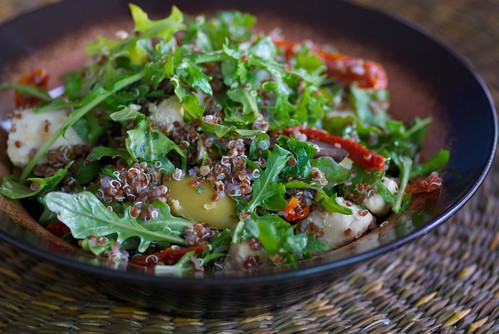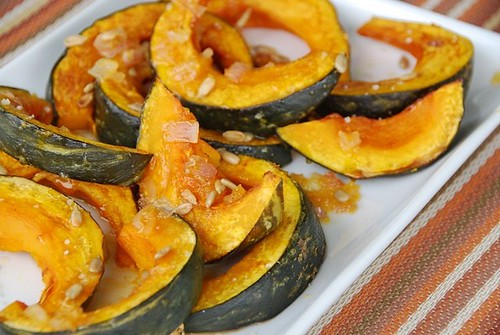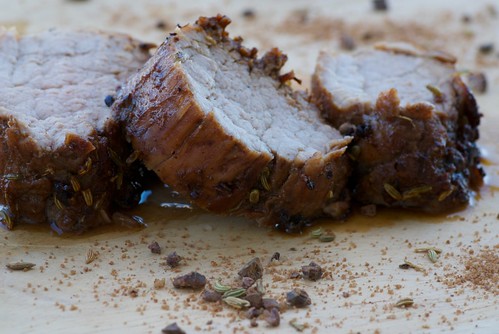 Can you hear it? It's the heading scratching, hand-wringing, coffee-buzzed clatter of food editors and writers across the country desperately attempting to predict the biggest food trends of 2012. Here's a sampling:
Can you hear it? It's the heading scratching, hand-wringing, coffee-buzzed clatter of food editors and writers across the country desperately attempting to predict the biggest food trends of 2012. Here's a sampling:Yahoo News and the Food Channel predict the rise of Peruvian food in 2012. "No chance," counters Esquire's John Mariani, who claims that beyond ceviche, "there's not a helluva lot more to Peruvian cuisine."
Meanwhile, The James Beard Foundation (JBF) predicts a Thai food "revival," while Fox News says it'll be Moroccan and Jewish foods.
The new "it" dessert of 2012: the humble doughnut. That is, according to the JBF. YumSugar thinks it's going to be kouign-amann, a buttery French cake. My money's on doughnuts for this one. Who is ever going to know how to spell or pronounce "kouign-amann"? I mean, really, come on.
A few more predictions for the hottest food trends in 2012 include unusual pizza toppings (cardoons, anyone?), exotic seafood (uni), and more animal parts (bone marrow, tripe).
These folks really shouldn't stress about being right. Because when December 2012 rolls around, they'll all be writing articles about the actual hottest food trends of 2012, and it won't matter if their December lists are completely different from the January ones.
I'm not too interested in predicting this year's food trends, but I am interested in learning about what foods YOU'll be eating of 2012. Below you'll find eight foods I'll be eating more of in 2012 not because they're trendy, because they're delicious, healthy, and easy to cook at home.
How about you? Which foods do you intend to eat more of in 2012? How do you feel about food trends?
1. Almond Milk: Since I'm lactose-intolerant, I've been drinking soy milk for years, but lately I've come to love unsweetened vanilla almond milk. A mere 40 calories per cup, its nutty, mildly sweet flavor makes it ideal for breakfast smoothies.
How to enjoy: Use in place of milk in smoothies, oatmeal, and other recipes, such as pudding.
Sample recipes: Cranberry, Banana, and Honey Smoothie and Mom's Chocolate Pudding with Bananas and Graham Crackers.
2. Red Quinoa (pronounced KEEN-wah): Because it's a gluten-free, high-protein, remarkably nutty, chewy, versatile whole grain. And because it's red.
How to cook it: Boil -- follow instructions on package.
Sample recipes: Warm Red Quinoa, Chicken, and Arugula Salad (below)

3. Leafy Greens including Kale, Red Kale, Mustard Greens, Swiss Chard, Collards, Turnip Greens, and Spinach. You see them at the market, pick them u[, wonder what to do with them, then put them back. Don't! Saute them with olive oil and garlic; add them to soups, stews, pastas, and grain dishes; eat them raw in salads. On average, 1 cup of cooked leafy greens without salt ranges between 35-45 calories and contains between 2-6 grams of protein.
How to cook them: Boil; steam; saute; roast; raw in salads.
Sample recipes: Raw Greens, Apple, and Carrot Salad with Warm Maple-Mustard Vinaigrette and Easy Butternut Squash, Kale, and Chickpea Soup.
4. Kabocha Squash (pronounced kuh-boh-cha). Because its sweet, fluffy orange flesh tastes like a sweet potato. Because it's only 30 calories per cup. And because you're tired of buying butternut squash.
How to cook it: roast; steam; boil.
Sample recipe: Roasted Kabocha Squash with an Orange-Honey Glaze (below)

5. Scallops. Among the least "fishy" of seafood, scallops are usually liked by everybody at the dinner table. That's a good thing since 4 ounces of scallops are only 125 calories and boast 28 grams of protein. They also pair well with just about any type of vegetable from roasted spaghetti squash and sweet potatoes to sauteed escarole and spinach.
How to cook them: Pan-sear or bake.
Sample recipe: Pan-Seared Sea Scallops with Kumquats
6. Pork tenderloin. It's inexpensive, easy-to-make, endlessly versatile, and healthier than you might think. An average 4-ounce serving of pork tenderloin is 195 calories, 25 grams of protein, and 9.5 grams of fat.
How to cook it: Pan-sear, then roast in oven; grill.
Sample recipe: Chipotle-Cocoa Rubbed Pork Tenderloin (below)

7. Grass-Fed Ground Bison/Buffalo. I love ground beef burgers and meatballs and don't plan to stopping eating them, but I will be introducing more ground bison into my diet in 2012. Why? It's got a fresh, robust meat flavor, sort of like a souped-up steak burger, and it's lower in fat, calories, and cholesterol as compared to ground beef. A 3.5 ounce serving of 95% lean ground bison is 146 calories, 20 grams of protein, and 7.2 grams of fat.
How to cook it: Pan-sear; oven bake; grill; broil.
Sample recipe: Buffalo Burger from Simply Recipes
8. Almonds:While some women's purses contain hair brushes and coupon holders, mine contains a Ziploc snack bag of about 14 roasted, unsalted almonds. I can't tell you how many times that bag of almonds has saved me from a hunger attack while waiting in line at IKEA or Costco. And at only 100 calories, it beats the heck out of a Swedish meatball plate or slice of pizza.
How to enjoy almonds: As a snack; mixed with dried fruit; baked into muffins and breads; swirled into oatmeal and yogurt; tossed into salads, pastas, and whole grain dishes.
Sample recipes: Warm and Nutty Breakfast Couscous and Cherry, Prune, and Almond Granola.
Top photo credit: FFC, San_Drino.